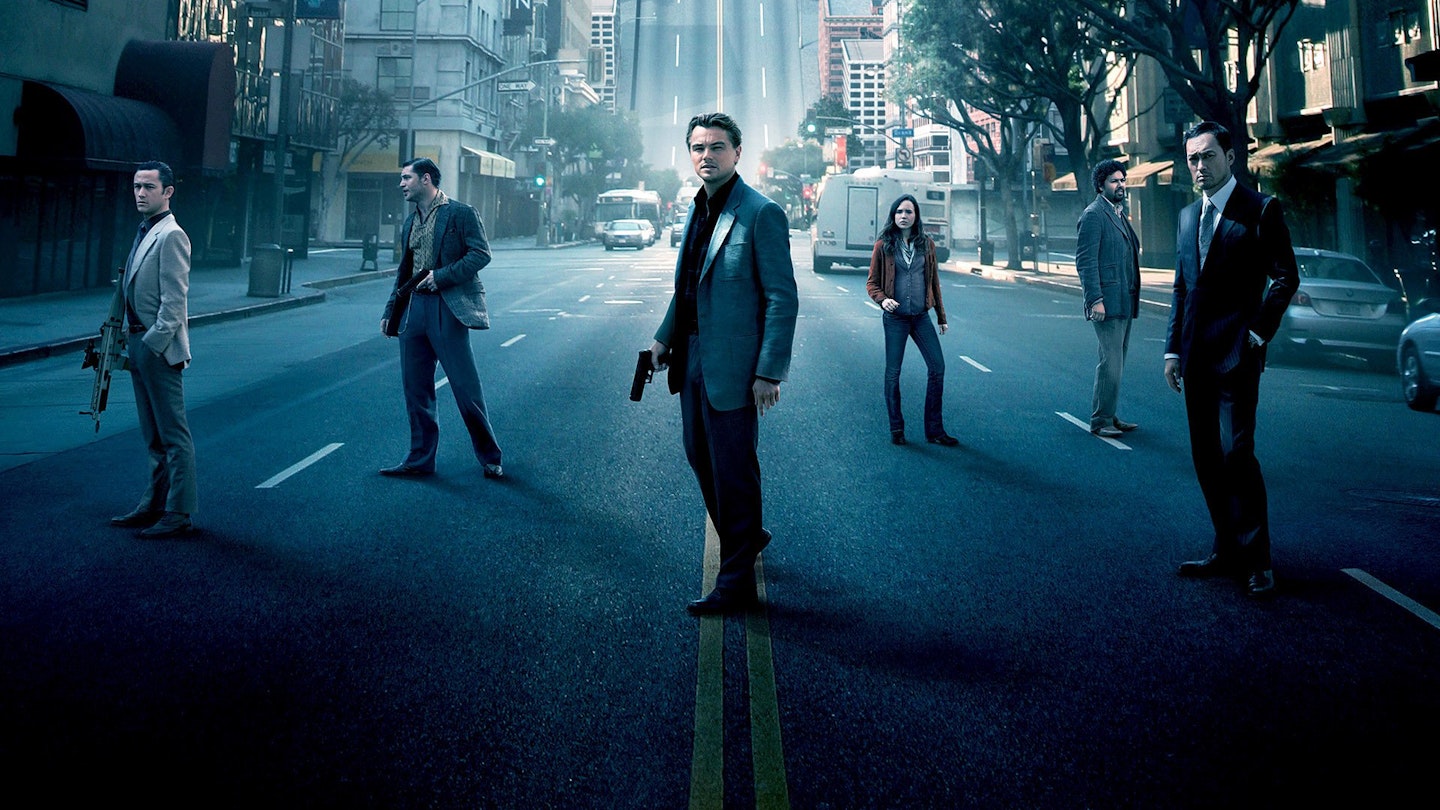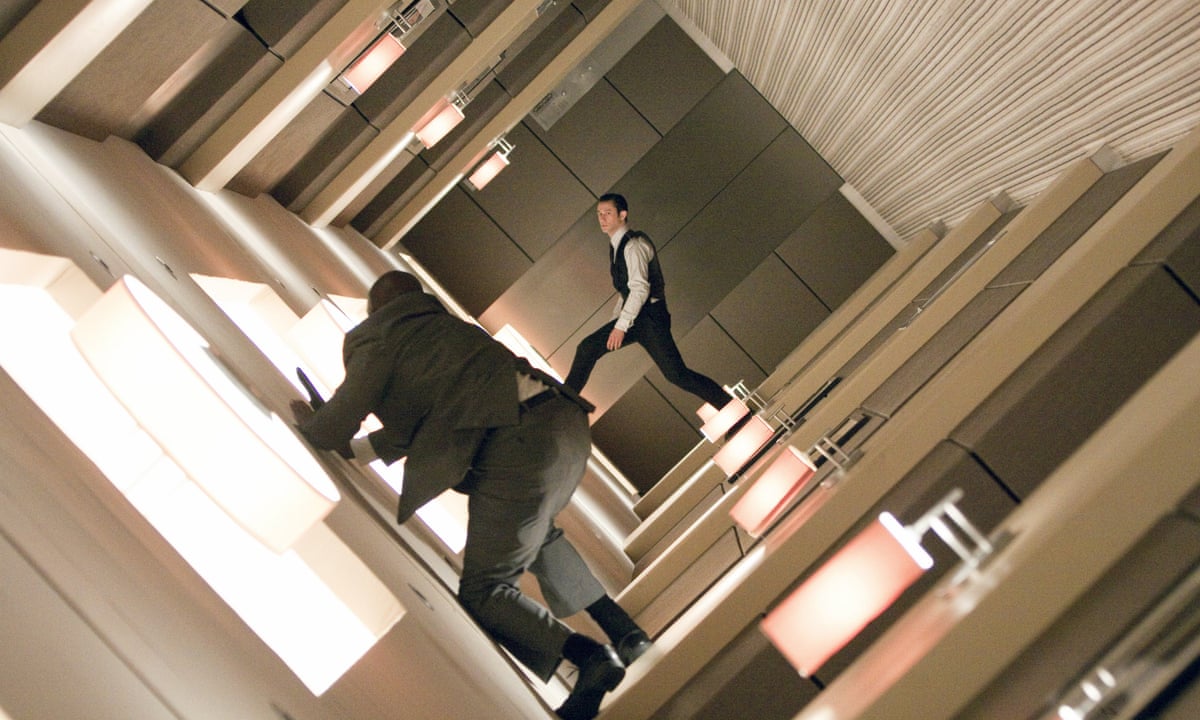 Christopher Nolan’s Inception is a mind-bending thriller that navigates the intricate corridors of dreams and subconsciousness. Dominated by the enigmatic protagonist, Dom Cobb (Leonardo DiCaprio), the narrative unfolds in a world where skilled extractors enter dreams to steal ideas from the subconscious. However, Cobb is burdened by a haunting past, and his ability to navigate dreams comes with a heavy cost.
Christopher Nolan’s Inception is a mind-bending thriller that navigates the intricate corridors of dreams and subconsciousness. Dominated by the enigmatic protagonist, Dom Cobb (Leonardo DiCaprio), the narrative unfolds in a world where skilled extractors enter dreams to steal ideas from the subconscious. However, Cobb is burdened by a haunting past, and his ability to navigate dreams comes with a heavy cost.
Hired for an unprecedented mission, Cobb assembles a team of specialists, including Arthur (Joseph Gordon-Levitt), Eames (Tom Hardy), and Yusuf (Dileep Rao), to accomplish ‘inception’—the planting of an idea into someone’s mind. The target is Robert Fischer Jr. (Cillian Murphy), heir to a powerful empire, and the goal is to make him believe the idea is his own.
As the team delves into multiple layers of dreams within dreams, the boundaries between reality and illusion blur. Nolan crafts a visually stunning and intellectually stimulating narrative, challenging the audience to question the nature of reality itself.

Characters
The strength of Inception lies not only in its intricate plot but also in its well-developed characters. Dom Cobb, the tormented and complex protagonist, anchors the story with Leonardo DiCaprio delivering a mesmerizing performance. His struggle with guilt and the haunting memories of his deceased wife, Mal (Marion Cotillard), add emotional depth to the narrative.
The supporting characters, each uniquely skilled in the art of dream manipulation, contribute to the film’s richness. Arthur, the pragmatic and reliable partner played by Joseph Gordon-Levitt, provides a grounding force amidst the chaos of dreams within dreams. Tom Hardy’s charismatic portrayal of Eames injects humor and charm, while Ellen Page as Ariadne serves as the audience’s guide, questioning the rules of the dream world.
The chemistry and dynamics between the characters create a captivating ensemble, enhancing the film’s emotional resonance. The audience is not only taken on a visually stunning journey but also invited into the minds and hearts of these complex characters.

Inception Ending Explained (Spoilers)
Inception’s ending has become the subject of intense speculation and debate. The final scene features Cobb returning to the United States and reuniting with his children after successfully completing the inception mission. However, a small spinning top becomes the focal point of discussion. Throughout the film, Cobb uses the spinning top to distinguish between dreams and reality. If the top keeps spinning, he’s in a dream; if it falls, he’s in reality.
In the closing moments, Cobb is reunited with his children, but the audience is left in suspense as the spinning top wobbles but doesn’t definitively fall before the screen cuts to black. This deliberate ambiguity fuels endless interpretations.
One interpretation suggests that the spinning top doesn’t matter; the real-world reunion with his children is enough evidence that Cobb is in reality. Another interpretation proposes that the entire sequence is still a dream, as Cobb’s emotional need for closure may have influenced the dream’s outcome. Nolan intentionally leaves the audience to decide, emphasizing the subjective nature of reality.
F.A.Q
a. Is It based on a True Story? No, Inception is not based on a true story. Christopher Nolan conceived the idea and co-wrote the screenplay with inspiration from lucid dreaming, exploring the complexities of the mind rather than drawing from real-life events.
b. What Is the main idea of the movie? The main idea revolves around the concept of dreams within dreams and the exploration of subconscious landscapes. Inception delves into the power of ideas, the fragility of reality, and the emotional intricacies of its characters.
c. Is This Movie Worth Watching? Absolutely. Inception is a cinematic masterpiece that seamlessly combines intricate storytelling, stunning visuals, and exceptional performances. It offers a unique and thought-provoking experience that has captivated audiences worldwide.
d. What Is the Symbolism in This Movie? Symbolism is woven throughout Inception, with recurring motifs like the spinning top representing the uncertainty of reality. The totem serves as a symbol of each character’s perception of the world around them, blurring the lines between the tangible and the imagined.
In conclusion, Inception stands as a testament to Christopher Nolan’s storytelling prowess and filmmaking mastery. Its intricate plot, well-defined characters, and thought-provoking themes make it a timeless cinematic journey that continues to captivate audiences, inviting them to unravel the layers of dreams and question the very nature of their own reality.

